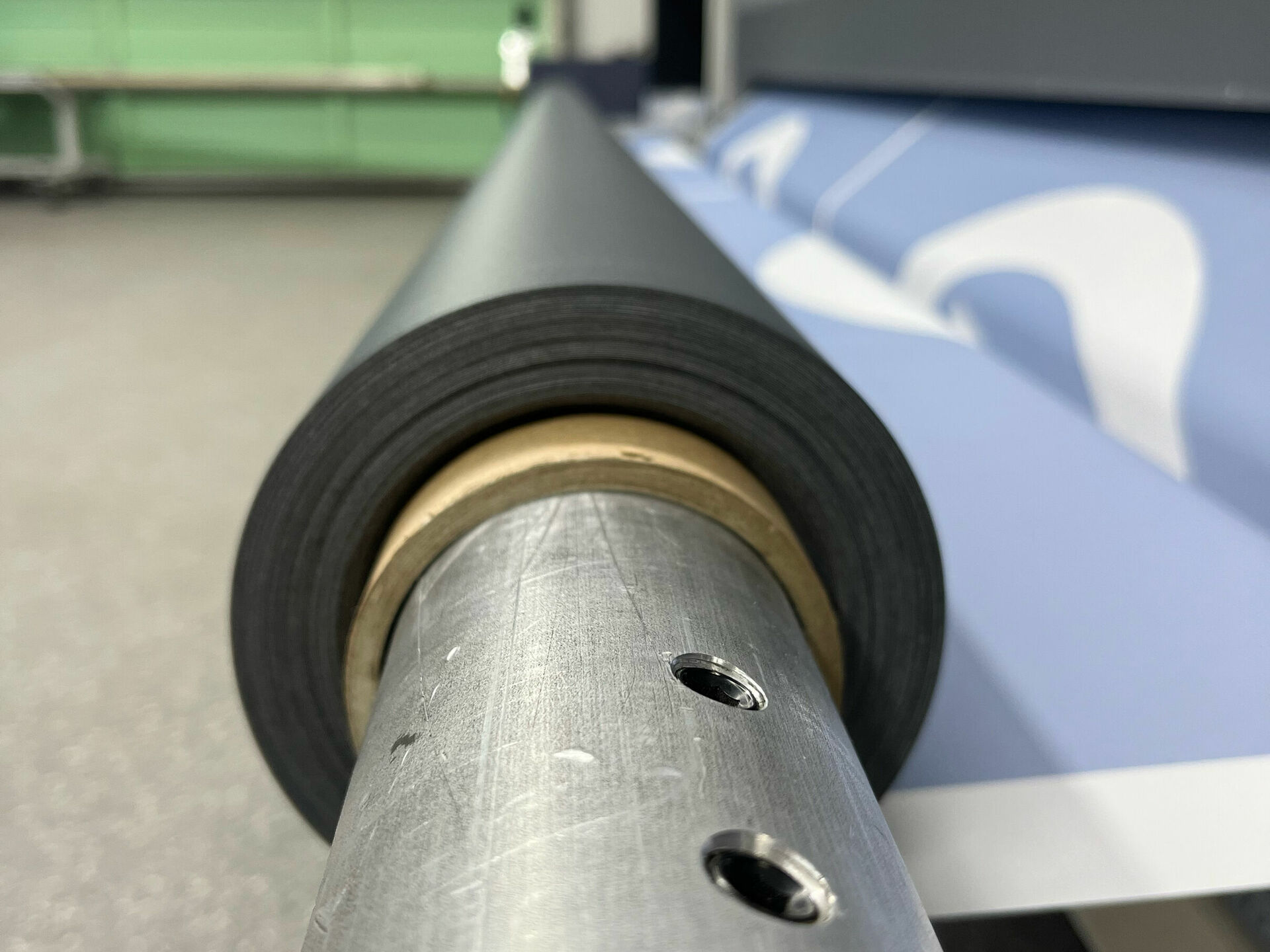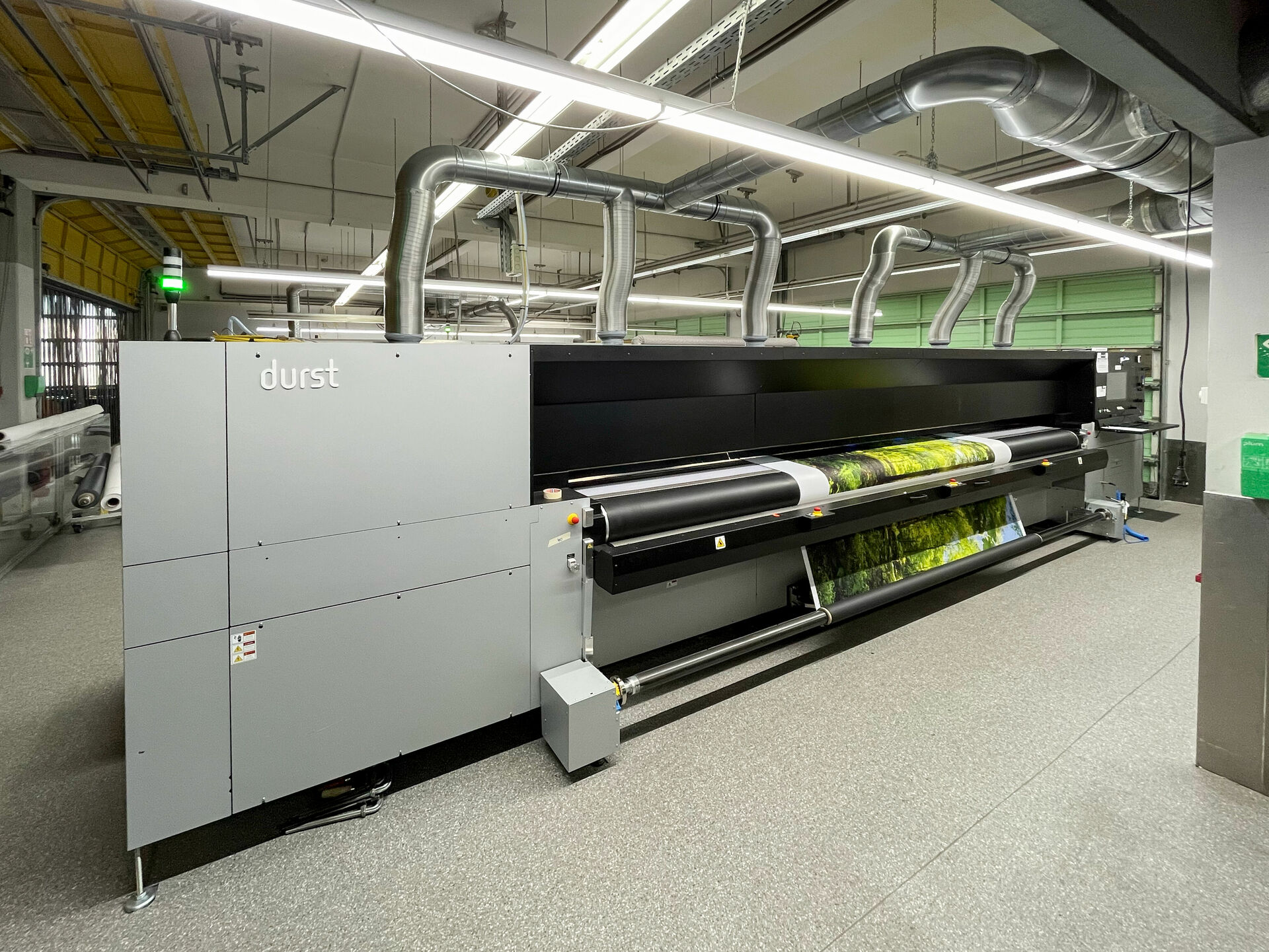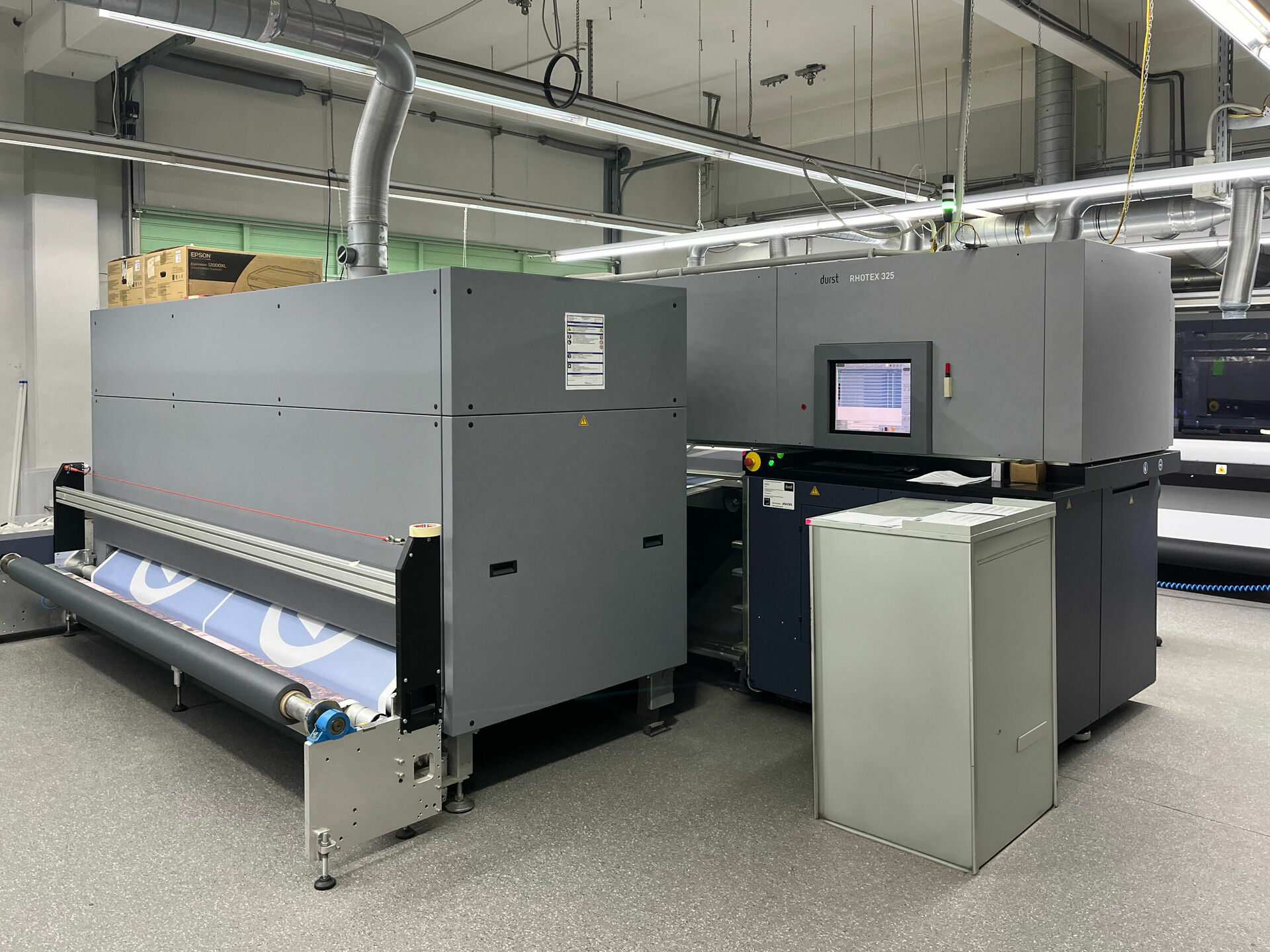Our massive printing machines, with their large viewing windows, look almost futuristic in action. Inside, bright ultraviolet light flashes as a large print head carriage moves back and forth, applying ink with 24 print heads. The ink is immediately cured by UV lamps after each pass of the carriage.
We use a 4-color system (CMYK) and enhance it to 6 colors by adding light cyan and light magenta. These additional colors ensure smoother gradations, which are especially important for printing skin tones and subtle color transitions.
At our Lemwerder production site, Procedes operates several state-of-the-art UV printers. Having multiple identical machines allows us to handle large orders efficiently and complete them on short notice.
Deep dive into UV inks
A central element of UV printing is the use of special inks that cure under UV light. These inks, developed through advanced chemical research, are what set UV printing apart from other techniques.
Composition of UV inks
UV inks are composed of two main components: photoinitiators and monomers.
Photoinitiators
These chemicals react when exposed to UV light, initiating the polymerization process. UV light causes photoinitiators to break down into reactive species that start the polymerization reaction.
Monomers
Monomers are small molecules that join together to form polymers when activated by the reactive species. This reaction transforms the liquid ink into a solid, permanent layer on the textile.
Curing process
The curing process is the core of UV printing. Initially, the ink applied to the textile is liquid. When UV light hits the ink, photoinitiators trigger a rapid chemical reaction that causes the monomers to link together, forming long polymer chains. This polymerization process solidifies the ink, allowing it to adhere firmly to a variety of surfaces, including textiles.
UV inks do not contain solvents or thinners, making them more user- and environmentally-friendly. However, the inks do emit some vapors. To manage this, we use large pipes to vent the air directly outside during production.
Let there be light
Advancements in LED technology have significantly improved the UV printing process, making it more energy-efficient and eco-friendly. Modern UV LEDs consume less energy, have longer lifespans, and produce less heat compared to traditional UV lamps. This advancement not only enhances sustainability but also broadens the range of materials we can print on, as delicate materials can now be handled without risk of heat damage.
The UV printing process has established itself in the world of digital printing as a versatile and efficient method, but it also causes certain challenges.
A key advantage of UV printing is the speed of the curing process. The ink dries almost instantly, which leads to a significant increase in production speed. Textiles printed using the UV process can be processed or packaged immediately and without any additional steps. This feature makes UV printing ideal for time-critical jobs and high print volumes.
However, there are challenges. Unlike dye-sublimation printing, where inks penetrate the textile fibers, UV inks remain on the surface. This can sometimes result in ink rubbing off. The stiffness of the cured ink layer on flexible materials can also lead to “whitening.” This is the appearance of small white cracks that occur when the material is creased or folded. The underlying textile becomes visible, disrupting the smooth, cohesive print.
To prevent whitening, we always roll our UV-printed textiles onto cardboard cores and ship them in this form, ensuring the prints remain intact and visually appealing.



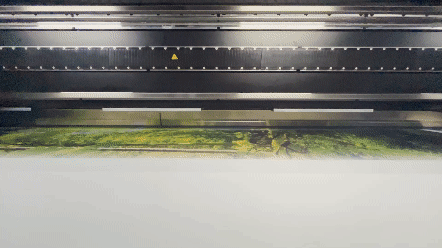
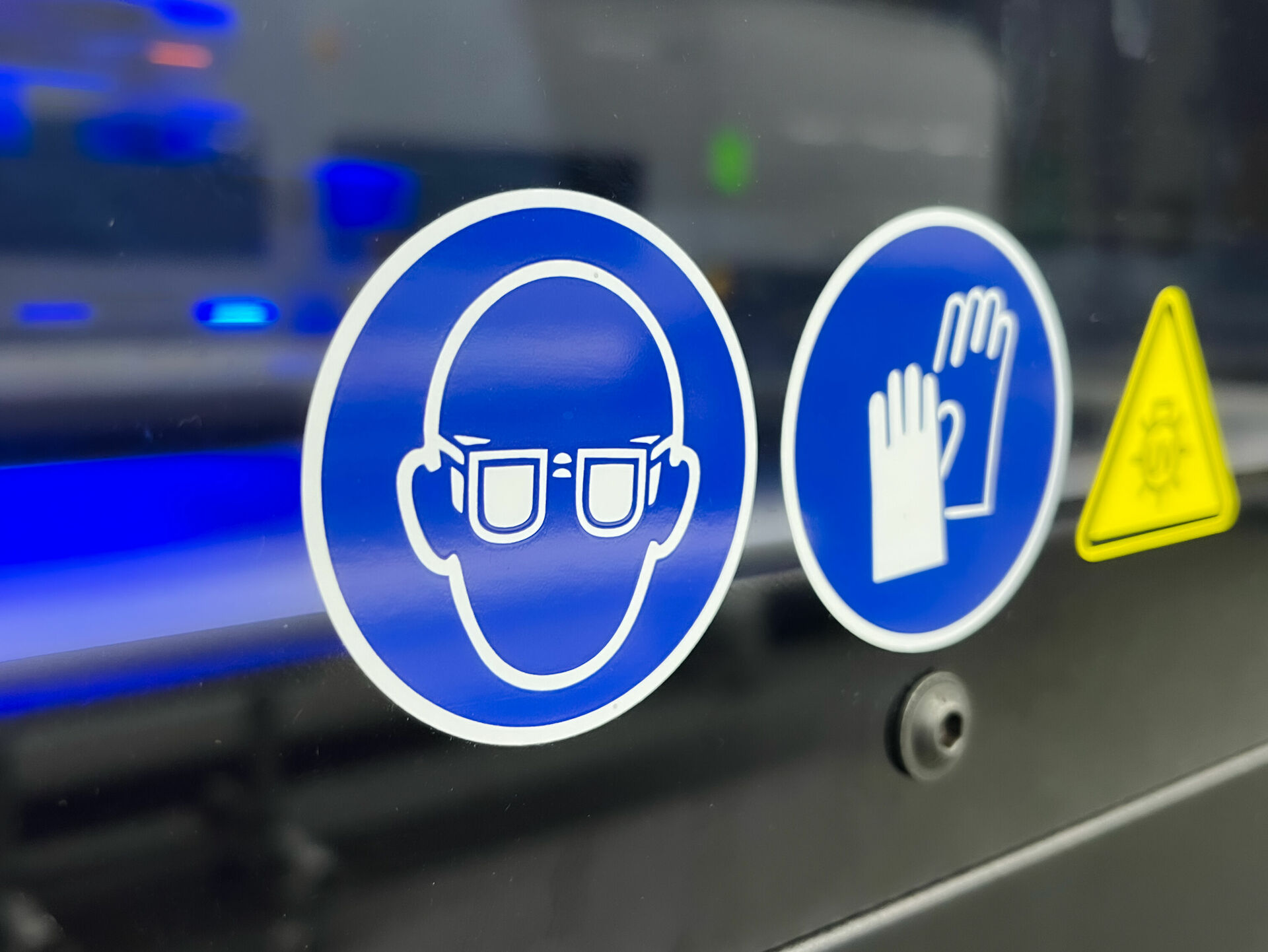
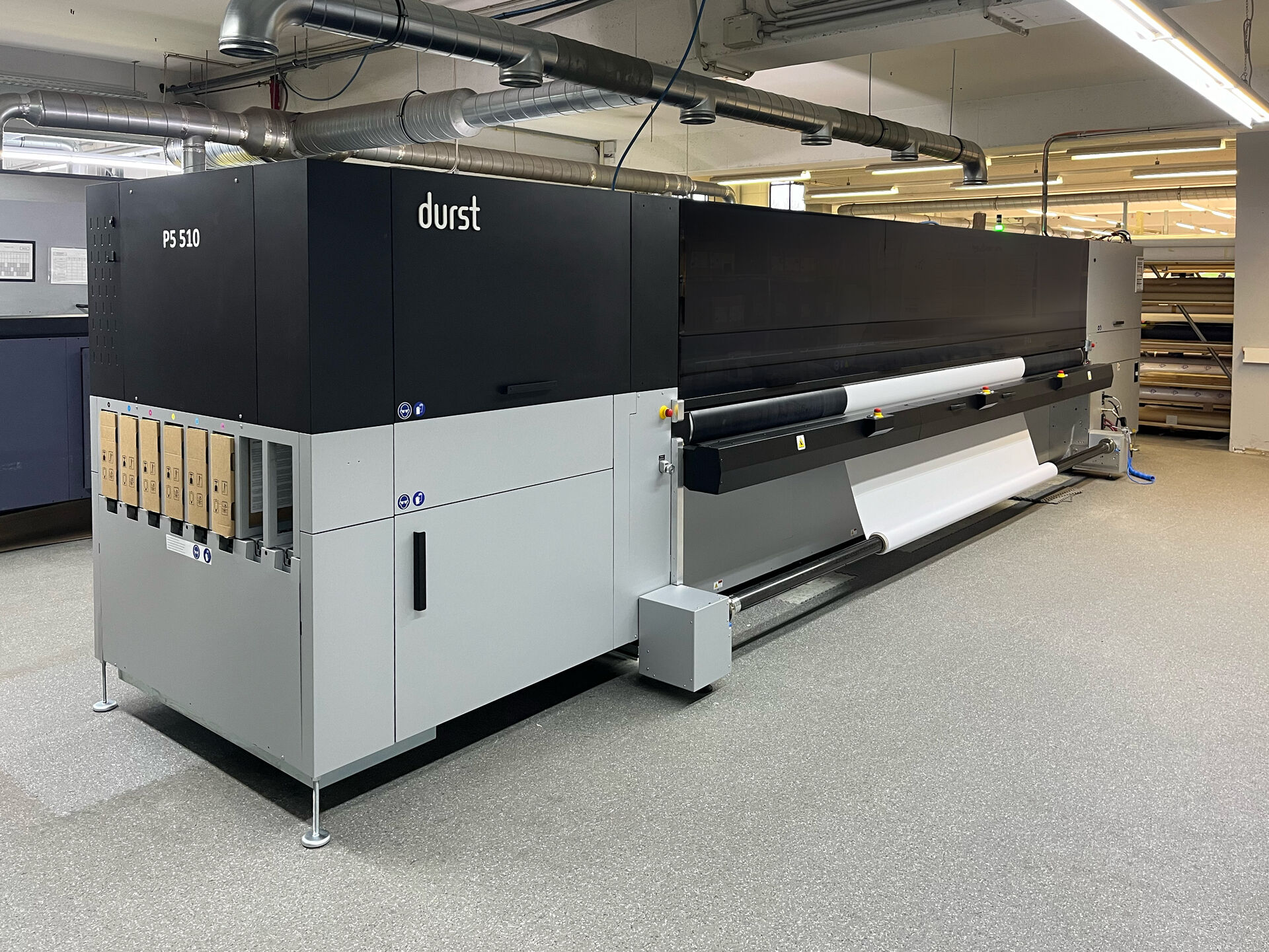
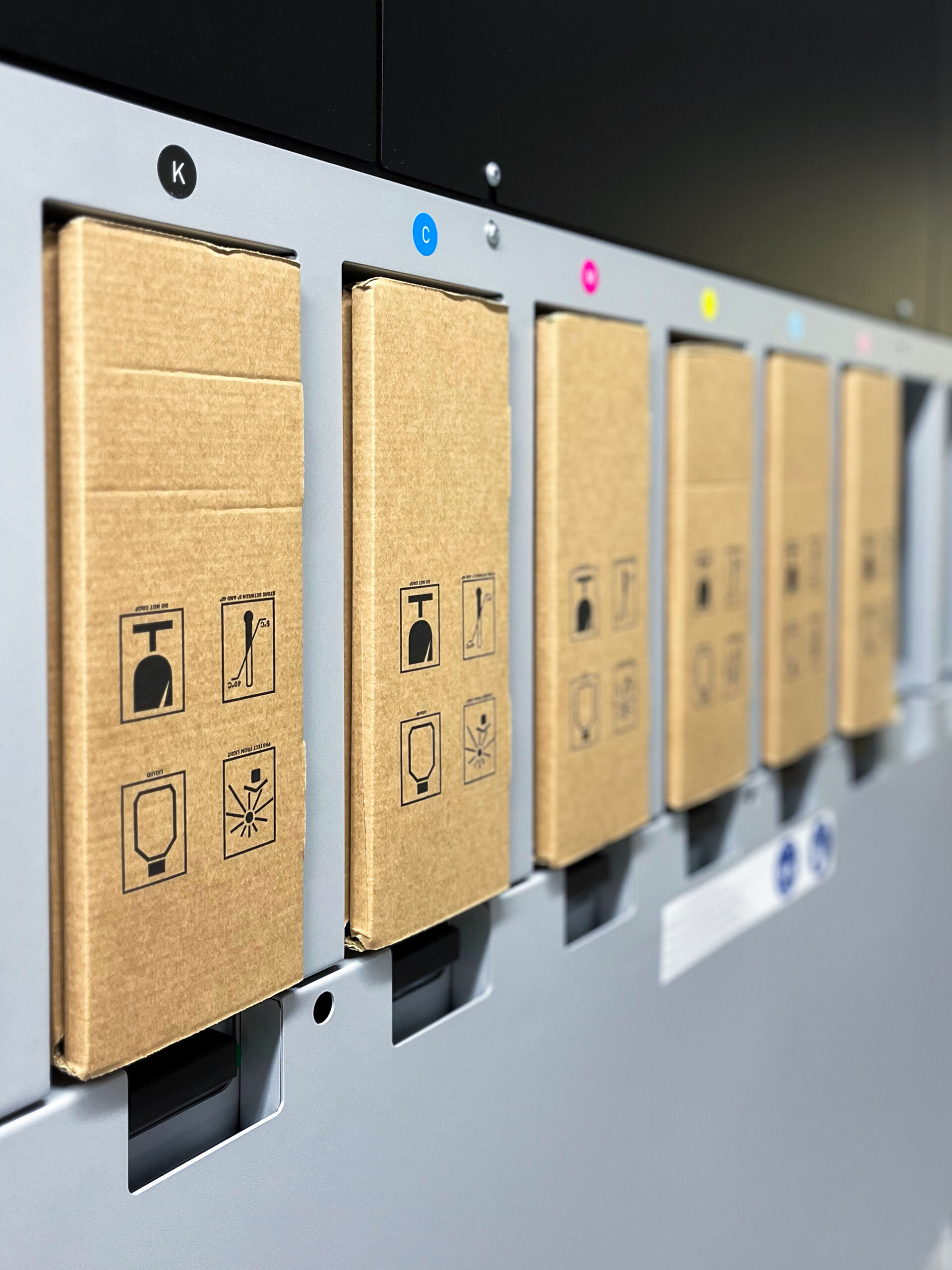
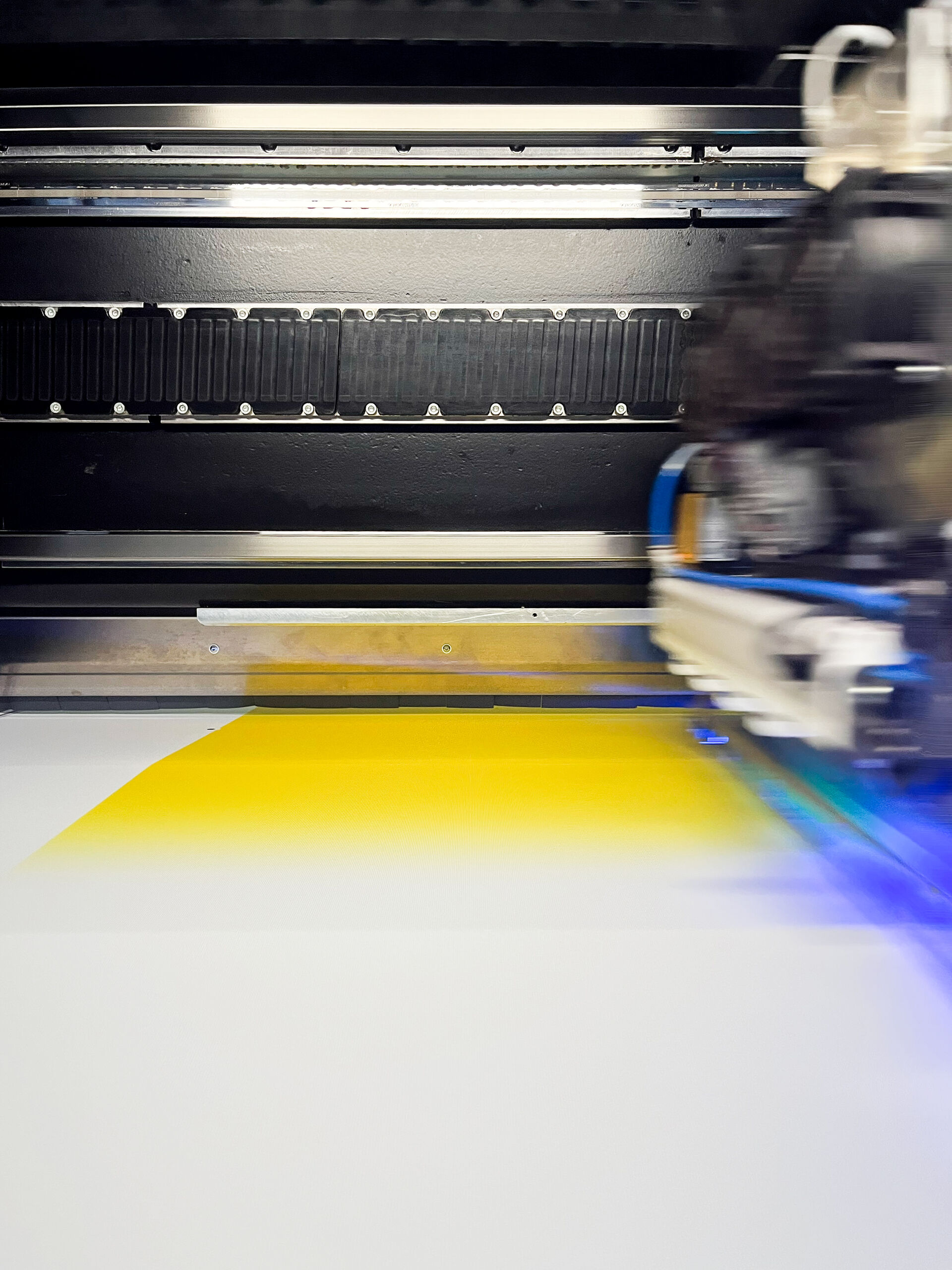
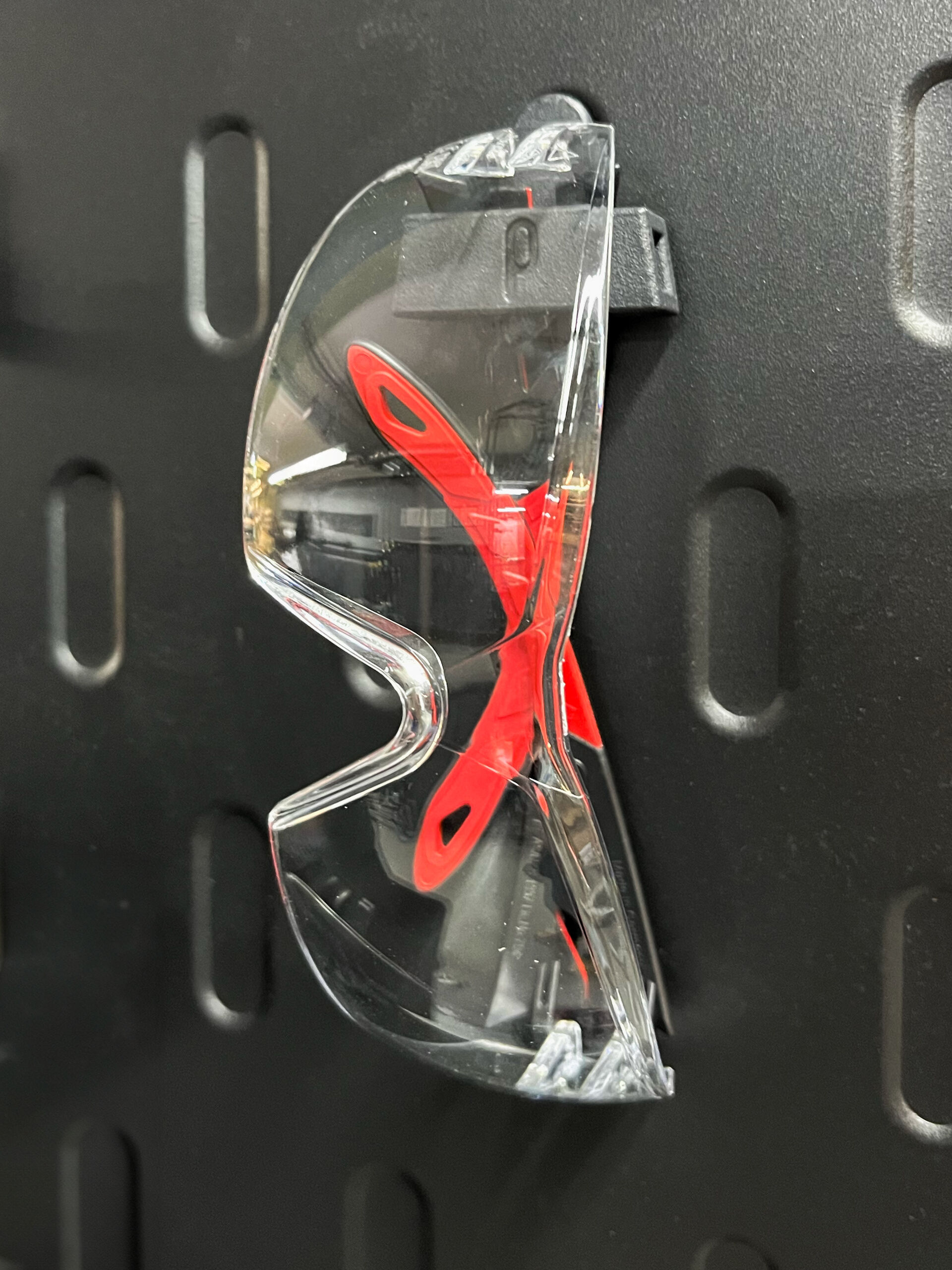
![[Translate to English:] Round textile sculptures in white hang from the ceiling.](/fileadmin/_processed_/f/7/csm_cta-procedes_b2c2ad64de.jpg)

